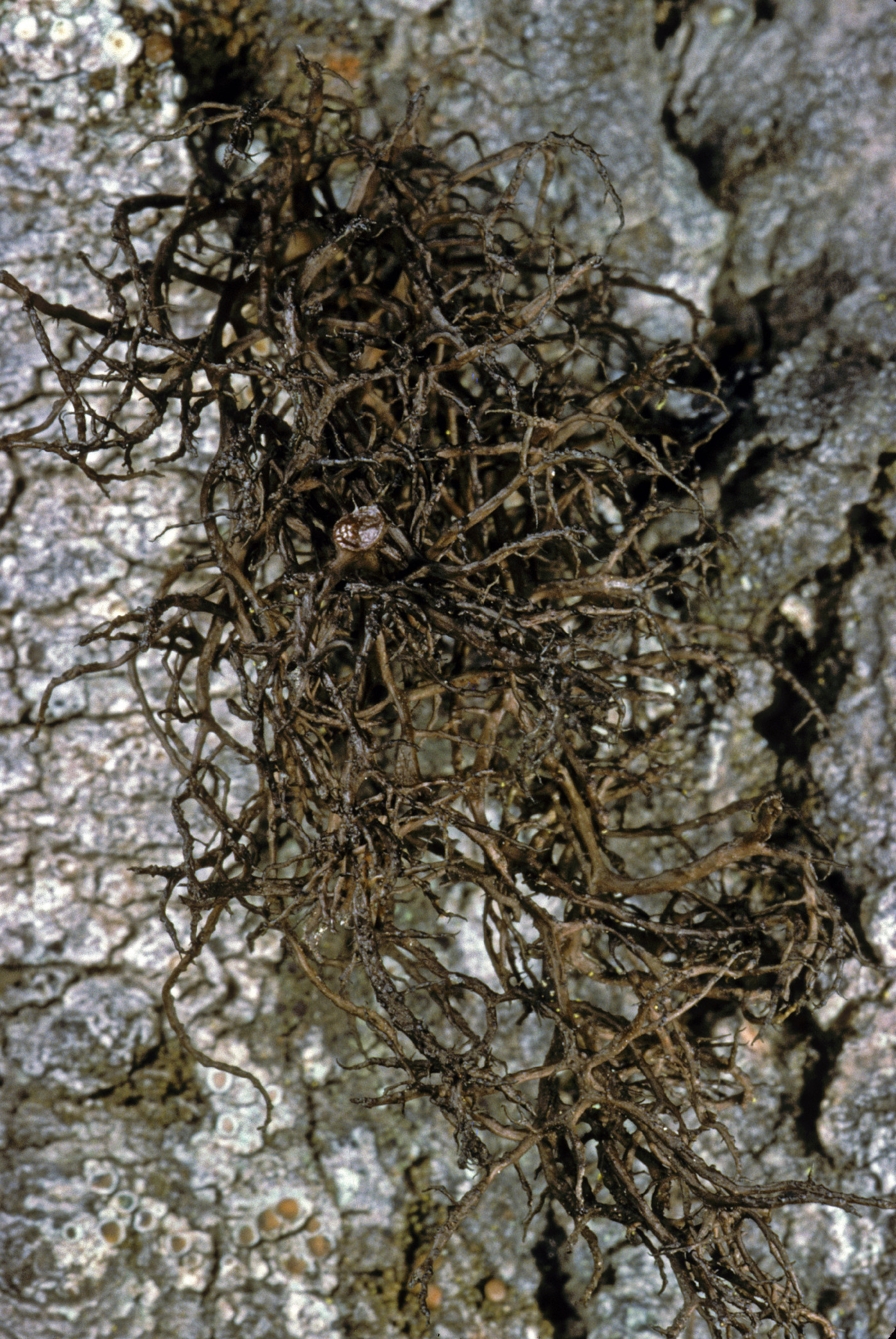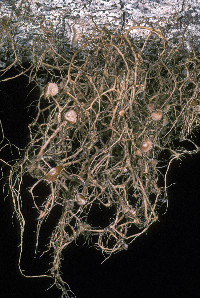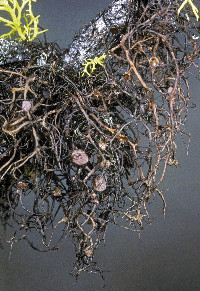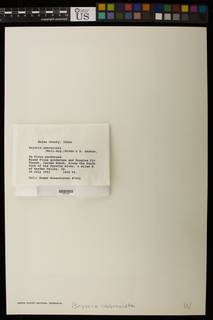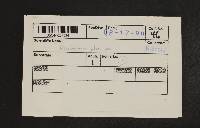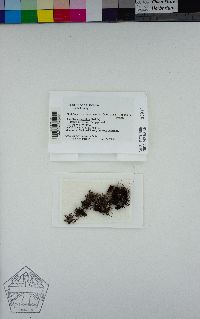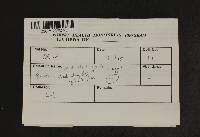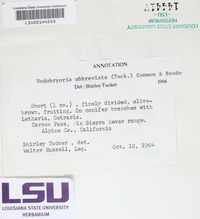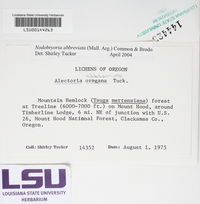
Consortium of Lichen Herbaria
- building a Global Consortium of Bryophytes and Lichens as keystones of cryptobiotic communities -
- Home
- Search
- Images
- Species Checklists
- US States: O-Z >
- US National Parks
- Central America
- South America
- US National Parks
- Southern Subpolar Region
|
|
|
|
Family: Parmeliaceae
[Alectoria abbreviata (Müll. Arg.) R. Howe, moreAlectoria divergens f. abbreviata Müll. Arg., Bryopogon abbreviatus (Müll. Arg.) Gyeln., Bryoria abbreviata (Müll. Arg.) Brodo & D. Hawksw.] |
Nash, T.H., Ryan, B.D., Gries, C., Bungartz, F., (eds.) 2002. Lichen Flora of the Greater Sonoran Desert Region. Vol 1. Thallus: caespitose to erect, very small, to c. 0.5-1 cm tall [but 2-3 (-6) cm tall in non-Sonoran region material], brittle; branching: irregular, anisotomic dichotomous, broadly divergent at the base, occasionally anastomosing; often appearing spinulose from frequent short, pointed lateral branches; axils: usually obtuse branches: roundish or ± angular or uneven to somewhat flattened in cross section, foveolate and longitudinally furrowed, terete only for the finest terminal branches and spinulose surface: rather dark to somewhat pale red-brown, usually dull, occasionally partly lustrous or slightly shiny; soredia and isidia: absent Apothecia: rare and immature (up to c. 0.5 mm diam.) in Sonoran material, but in specimens from more northern areas almost always present and often abundant, subterminal or rarely lateral, 0.5-3.0 (-3.5) mm diam.; thalline margin: concolorous with thallus, persistent and ciliate to disappearing, flat to recurved; disc: red-brown asci: clavate, 8-spored ascospores: subglobose [in non-Sonoran material] c. 5-6.5 x 4.5-5 µm Pycnidia: common, on terminal branches, often in groups conidia: 5-8 µm long Spot tests: K-, C-, KC-, P-, UV- Secondary metabolites: none detected. Substrate and ecology: in chaparral, on conifers or wood, from near sea level to 2000 m World distribution: western North America, absent from immediately coastal areas Sonoran distribution: northern Baja California and southern California., mostly at 1000-2000 m. Notes: In well-developed material it is usually easily recognized by the combination of the short, tufted, reddish brown thallus, and the very frequent, subterminal apothecia with ciliate margins, growing on bark or wood. It is probable that the species (and genus) is now close to extinction from southern California (and from Baja California). One specimen (Bratt 6454, SBBG) has a subpendent thallus with narrow, smooth and terete main (and basal) branches with primarily acute axils and very few short lateral branches, as in N. oregana, but is included here on the basis of the very short (1-2 cm) thallus and its occurrence a very low elevation (even for N. abbreviata). Hales (1979) report of fatty acids may be based on misidentification of Kaernefeltia californica, which does contain fatty acids. |
Powered by Symbiota

